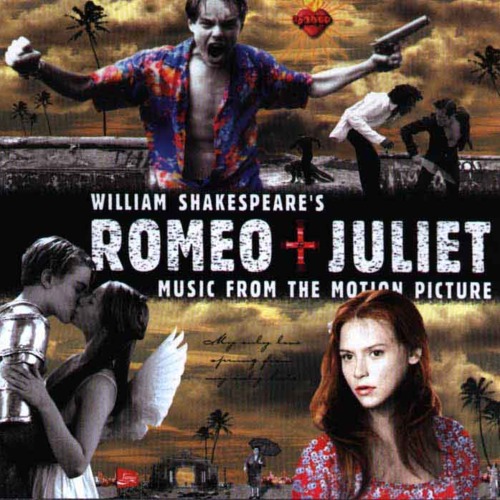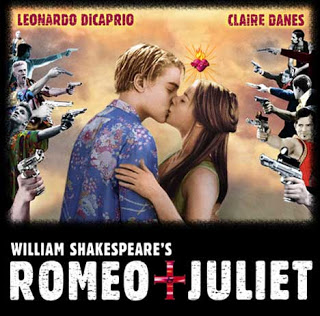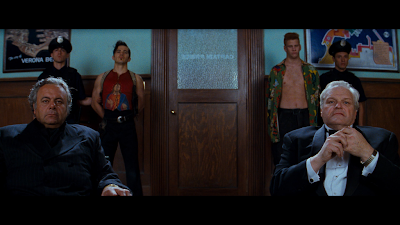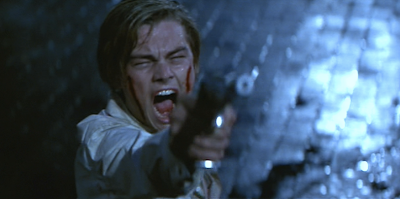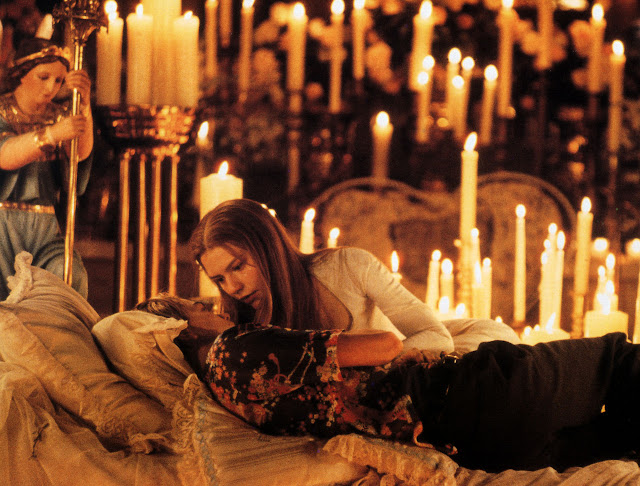Take Away This Lonely Man: (500) Days of Summer And Musical Storytelling by Victoria Edel
We hear the song one more time in a moment that mimics the first, after Tom’s illusion is shattered. Instead of listing what he loves about Summer, Tom lists the things he hates about her, concluding with “It’s Like The Wind,” and yelling, “I hate this song!” The romantic illusions are finally cracked. This isn’t the movie he thought it was.
Creating the Mythology of Beatrix Kiddo Through Music by Rhianna Shaheen
Tarantino’s vast knowledge of music is clear from the very beginning with Reservoir Dogs. However, it isn’t until the Kill Bill series when his soundtracks begin to drift away from pop and instead embrace more orchestral sounds like that of Ennio Morricone. Viewers need no knowledge of the genre to instantly recognize that spaghetti western feel. It’s that famous mix of Spanish guitar, orchestra, whistles, cracking whips, trumpet, flute and sometimes chorus that recalls images of Clint Eastwood clad in a green poncho and cowboy hat as the iconic Man with No Name.
Running Away With The Runaways: Sex, Rock ‘n Roll, and the Female Experience by Angelina Rodriguez
The music throughout the film deals with the lost and rebellious feelings during coming of age for young women. The movie tells the story of these two individuals and how their lives were affected by fame, but underneath that is the coming of age experience for young girls realizing their power and sexuality within a culture that seeks to suppress them.
The Siren Song of Cartoon Catgirls by Robert V. Aldrich
As evocative as the scene of the Puma Sisters doing their thing might be, and as culturally-charged a time as the release of Dominion Tank Police might have been, much of the success of this scene is owed to the music. “Hey Boy,” by Riko Ejima, is a haunting song that, while seemingly chaste in that it seems to be singing about dancing, captures something deep, deep in the soul.
Love It or Hate It, Emotions Served Raw in the Music of Les Misérables by Katherine Murray
Ugly singing; ugly make-up. ‘Les Misérables’ is deservedly known as the film that tried too hard to bum us out, and Anne Hathaway is known as the actress who tries too hard to be liked. But, isn’t it nice, sometimes, when somebody makes an effort?
The Sounds of Change and Confusion in The Graduate by Caroline Madden
Mike Nichol’s The Graduate has one of the most popular soundtracks of all-time. The songs reveal the dynamics of a character, theme, and a moment without the use of dialogue or a backstory, but simply through the lyrics of a Simon and Garfunkel song.
Love Jones: The Soundtrack of the Neo-Soul Generation by Inda Lauryn
Love Jones does more than captures a moment in time in the late 90s. It creates the point when neo-soul established itself as the music of all of us with artistic inclinations, those of us leaving fantasies of teenage love affairs behind for a more realistic image of making a relationship work. And, yes, for some of us it brought about a sexual awakening that helped us accept that sex could exist outside a relationship if it’s truly wanted that way.
Whale Rider: Women and Children First by Ren Jender
Lisa Gerrard of Dead Can Dance, one of the few successful women musicians who made the transition to film composer (she won a Golden Globe for her work on Gladiator), wrote and performed the music for 2002’s Whale Rider–and she didn’t have to date writer-director Niki Caro to do so. Gerrard might seem an unlikely choice: when I briefly worked in a women’s sex shop in the 90s, the store owner told me not to play Dead Can Dance on the sound system because they scared away customers. But Gerrard’s score for Rider does what the best movie music is supposed to do: reinforcing the drama of the film without calling unnecessary attention to itself.
What’s in a Soundtrack? The Sweet Sounds of Romeo + Juliet by Leigh Kolb
Zeffirelli’s Romeo and Juliet is a tale told by the older generation. Luhrmann’s Romeo + Juliet is one told by “unfaded” youth. When Des’ree was singing “Kissing You” as Romeo and Juliet kiss (and oh, how they kiss), she is singing with deep longing and pain. When Glen Weston sings “What is a Youth?” he sings at Romeo and Juliet, about how youth–and female virginity–fades.
The Soundtrack for That Thing You Do! Withstands the Test of Time by Lisa Anderson
That Thing You Do! with its sly humor, strong performances and ultimately heartwarming romance makes for satisfying viewing. It’s a meditation on the tension between art and commerce that manages to acknowledge what can be good about temporary fame. It’s also a squeaky-clean antidote to sordid, drug-filled “Behind-the Music”-type stories both fictional and real.
Watch Me Shine: Legally Blonde and My Path to Girl Power by Kathryn Diaz
My attachment wasn’t about Elle Woods or embracing hallmarks of traditional femininity that get belittled by western mainstream society (that would come later). I was all about lyrics like, “That’s not the way/ Nice girls behave/ Oh yeah I know/ You told me/ It’s not your choice/ I have a voice/ I guess you just don’t hear me.” It spoke to me on a spiritual level.
Girls Just Wanna … Take Control of Their Own Lives by Shay Revolver
I’m a lot older now and I still squeal with excitement when Girls Just Want to Have Fun comes on. When it showed up on Netflix my daughter and I watched the movie over a dozen times. We would take “supreme silly” dance breaks whenever the music would play and when the Netflix purge occurred we found a DVD copy (OK we got two in case one got scratched or lost) of our very own on Amazon so that we could continue this tradition at will.
Death by Stereo: Innocence Lost in The Lost Boys by Bethany Ainsworth-Coles
The Lost Boys is a classic 1980s vampire flick directed by Joel Schumacher. It is as famous for its soundtrack as it is for its content. The entire film in fact is exemplified in its main theme–“Cry Little Sister,” by G Tom Mac–from the typical horror themed sections to its classic 80s rock moments down to its choral moments. These sections sum up the film almost perfectly.

